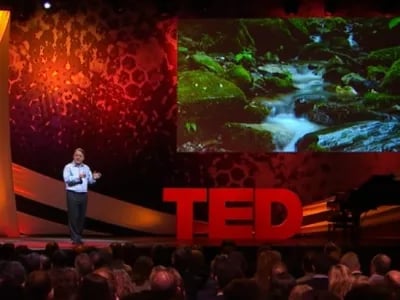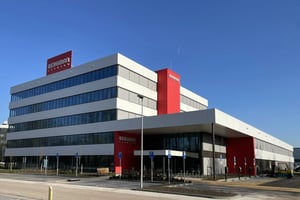Family businesses are known for seeking to avoid significant financial risks. Their usually prudent budgeting means that they are relatively immune to recessions. But, claims BCG consultant Martin Reeves, if businesses want to have a lasting “raison d’être”, financial prudence is only one of the six principles they need to apply.
The average lifespan of a US business is less than 30 years. And the probability that the average business will no longer exist five years from now is 35%. So it is certainly no certainty that businesses will exist forever, Martin Reeves argues in his TEDx presentation “How to build a business that lasts 100 years”. In his presentation, Reeves analyses the success factors that allow some businesses to survive effortlessly for decades, even through challenging economic conditions, while others sink without trace. Reeves does this by way of an analogy with the human immune system, which brings together a set of six characteristic features.
1. Redundancy
The first defining feature of the immune system is redundancy. The human immune system has an abundance of white blood cells and other cells. It has an oversized “buffer”, i.e. there is no risk whatsoever that the immune system will be compromised and the “buffer” is only activated when things go wrong.
2. Diversity
The second feature is diversity. Besides blood cells, the immune system boasts a widely diverse range of different types of entities (B cells, T cells, antibodies), each of which has its own typical method of operation. Jointly, claims Reeves, they “can cope with more or less anything that evolution has been able to throw at it”.
3. Modularity
The third feature is modularity. The immune system is not one single system, but comprises various subsystems – from the skin down to the adaptive immune system. If one subsystem fails, another can take over. Together they offer almost virtually fool-proof protection against external influences.
4. Adaptation
The fourth feature is adaptation. The human immune system is adaptive: it continually adapts and can develop targeted antibodies – even for invaders it has never faced before.
5. Prudence
At the same time, the immune system operates very prudently: it responds proportionately to every threat, however big or small. And the system remembers every previous threat, it case it ever returns.
6. Embeddedness
Lastly, the immune system is embedded. It does not exist in isolation but is embedded in the larger system of the body as a whole with which it works in perfect harmony.
The sum total of these six features ensures that the human immune system is hugely successful, considering the number of threats it is exposed to each and every day. But if you look at it from a business economics perspective, it is also extremely inefficient, as some of its parts are duplicated or triplicated and there are more antibodies “in stock” than is strictly necessary. Moreover, the system is highly complex and operates in part “à l’improviste” (and is hence unpredictable). However, if the immune system were more efficient and less complex, many people would not survive the next influenza virus.
Repurposing production capacity
Channelling his background as a biologist, Reeves is fond of drawing analogies between nature and business: according to the American, the six features of the immune system also harbour value for business. He explains this by reference to a series of well-known examples. Thus Japan’s oldest temple-building company survived through more than forty generations, until management decided to borrow money during a real estate bubble and to invest it in buildings. When the bubble burst, the business went under. According to Reeves, this was a direct consequence of failing to apply the principle of prudence.
The infamous failure of Kodak was likewise the consequence of a failure to apply two principles: diversity and adaptation. By contrast, its rival Fujifilm managed to survive by leveraging its knowledge of chemistry, material science and optics to diversify into various areas. Not all of those new spin-offs were successful, but they jointly provided enough of a foundation for the business to survive, argues Reeves.
When a raging fire completely destroyed the plant of a large and crucial supplier for Toyota, its automobile production initially came to a halt. Five days later the conveyor belts were up and running again: Toyota managed its supplier network on an integrated basis, allowing it to readily repurpose production capacity. The principles of modularity, integration and redundancy ensured that the catastrophic fire was never really a threat for the automobile manufacturer.
Thinking biologically
At the end of his presentation, Reeves asks the question that many among his audience had already been asking themselves: if these principles are so powerful, why are they not commonplace? Reeves says that is because you have to learn to think “differently” for this. While “mechanical thinking” is usually the dominant mode in businesses (define a goal, analyse, develop something according to a plan, focusing on efficiency and short-term performance), applying the six principles calls for a form of “biological thinking”. Instead of controlling complexity, you need to shape it as you go along. It’s the difference between throwing a ball at a tree and releasing a bird. The ball will travel towards the tree in a straight line, the bird will certainly not. But in the end it will nonetheless be perched on a branch.
According to Reeves, thinking and acting “biologically” comes naturally to all SME businesses because they lack the resources to shape their environment. Failing to adapt means failing to survive. But although every large business once started out as small business, the capacity for biological thinking appears to have been lost somewhere along the way. Many businesses have to learn to do so again if they are to succeed and survive in the present environment. Therefore the central strategic question in the boardroom should not only be: what do we need to do to compete more successfully? But also: what do we need to do to keep that up for a long time?
Watch the TEDx talk van Martin Reeves
The feature of “diversity” is also important with regard to the Supervisory Board. Read more on this in our interview with the Blikverruimers foundation “The Supervisory Board will benefit from greater diversity”.













